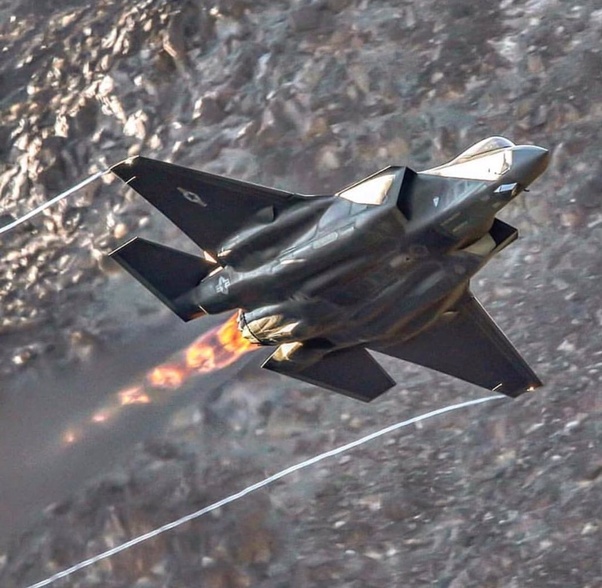India Doesn’t Want F-35s or THAAD; Little Interest in U.S. Hardware Offered to Replace Russian S-400
 Amid escalating U.S. pressure on India to abandon plans to purchase Russian S-400 missile systems, Delhi has been offered the American THAAD air defence system and F-35A stealth fighter should it acquiesce to Washington’s demands to terminate its defence cooperation with Russia. India has been a leading Russian defence client since the 1960s, with the USSR providing Delhi with the vast majority of its arms to counter a heavily militarised and fully Western backed Pakistan. While India has made some minor American armaments purchases, namely small numbers of AH-64 Apache and CH-47 Chinook helicopters and M777 howitzers, it has repeatedly denied any interest in either the F-35 or the THAAD system due to their poor suitability for its defence needs and lack of compatibility with existing hardware. The THAAD system for its part remains extremely limited in its capabilities relative to the S-400 despite its considerably greater cost, and with half the range, poor versatility and mobility and no hypersonic, anti-aircraft or counter-stealth capabilities it has been deemed an undesirable option. India for its part had pledged to proceed with the S-400 acquisition despite U.S. threats of economic sanctions and offers of its own hardware, denouncing imposition of unilateral sanctions under American domestic law as illegal.
Amid escalating U.S. pressure on India to abandon plans to purchase Russian S-400 missile systems, Delhi has been offered the American THAAD air defence system and F-35A stealth fighter should it acquiesce to Washington’s demands to terminate its defence cooperation with Russia. India has been a leading Russian defence client since the 1960s, with the USSR providing Delhi with the vast majority of its arms to counter a heavily militarised and fully Western backed Pakistan. While India has made some minor American armaments purchases, namely small numbers of AH-64 Apache and CH-47 Chinook helicopters and M777 howitzers, it has repeatedly denied any interest in either the F-35 or the THAAD system due to their poor suitability for its defence needs and lack of compatibility with existing hardware. The THAAD system for its part remains extremely limited in its capabilities relative to the S-400 despite its considerably greater cost, and with half the range, poor versatility and mobility and no hypersonic, anti-aircraft or counter-stealth capabilities it has been deemed an undesirable option. India for its part had pledged to proceed with the S-400 acquisition despite U.S. threats of economic sanctions and offers of its own hardware, denouncing imposition of unilateral sanctions under American domestic law as illegal.
While it was reported by a number of Western outlets in 2018 that Delhi had shown interest in acquiring the F-35, a single engine lightweight fifth generation fighter, this has been firmly refuted by a number of high ranking Indian officials. Air Chief Marshal B. S. Dhanoa, speaking publicly in New Delhi on April 26th of that year, stated: “There is not talk on F-35. The Indian Air Force has not evinced interest and not talked to anyone. It is incorrect to report that we are interested in F-35.” India’s non-aligned foreign policy does not sit well the considerable restrictions imposed by the U.S. on F-35 operators, with the stealth fighters reportedly collecting intelligence on their operators in the past and sending this to the United States. The U.S. also retains the ability to quickly ground any state’s F-35 fleet should it need to. The Su-30MKI which currently forms the mainstay of the Indian fleet is considerably faster, longer ranged, higher flying, more manoeuvrable and carries longer ranged munitions and in greater quantities than the F-35 – its only shortcoming being its lack of stealth or an AESA radar. The F-35’s considerable cost, offputting maintenance requirements, continuing performance issues, and reliance on parts from the United States – which has on several occasions cut off from operators of its hardware over political differences – all make the aircraft highly unsuitable for India’s defence needs.
India is currently in talks with Russia regarding the joint manufacture of the Su-57 fifth generation air superiority fighter in a specialised variant integrating Indian technologies. Indian officials have stated that an alternative option could be the purchase of ‘off the shelf’ Su-57 fighters from Russia. These sales are unlikely to commence until India has completed the manufacture of the Su-30MKI in the mid 2020s, which are currently being built in the country under licence with a fleet of over 300 planned. The Su-57’s capabilities are analogous to the American F-22 Raptor, and considerably surpass those of the F-35 across the spectrum with the exception of stealth. Future variants of the Su=57 are expected to integrate sixth generation technologies including hypersonic missiles, artificial intelligence and laser weapons, and it is these variants which India is reportedly planning to acquire in grater numbers alongside indigenous lighter stealth fighters developed under the AMCA program – for which Russia is providing considerable assistance in fields such as engine and AESA radar technologies.


